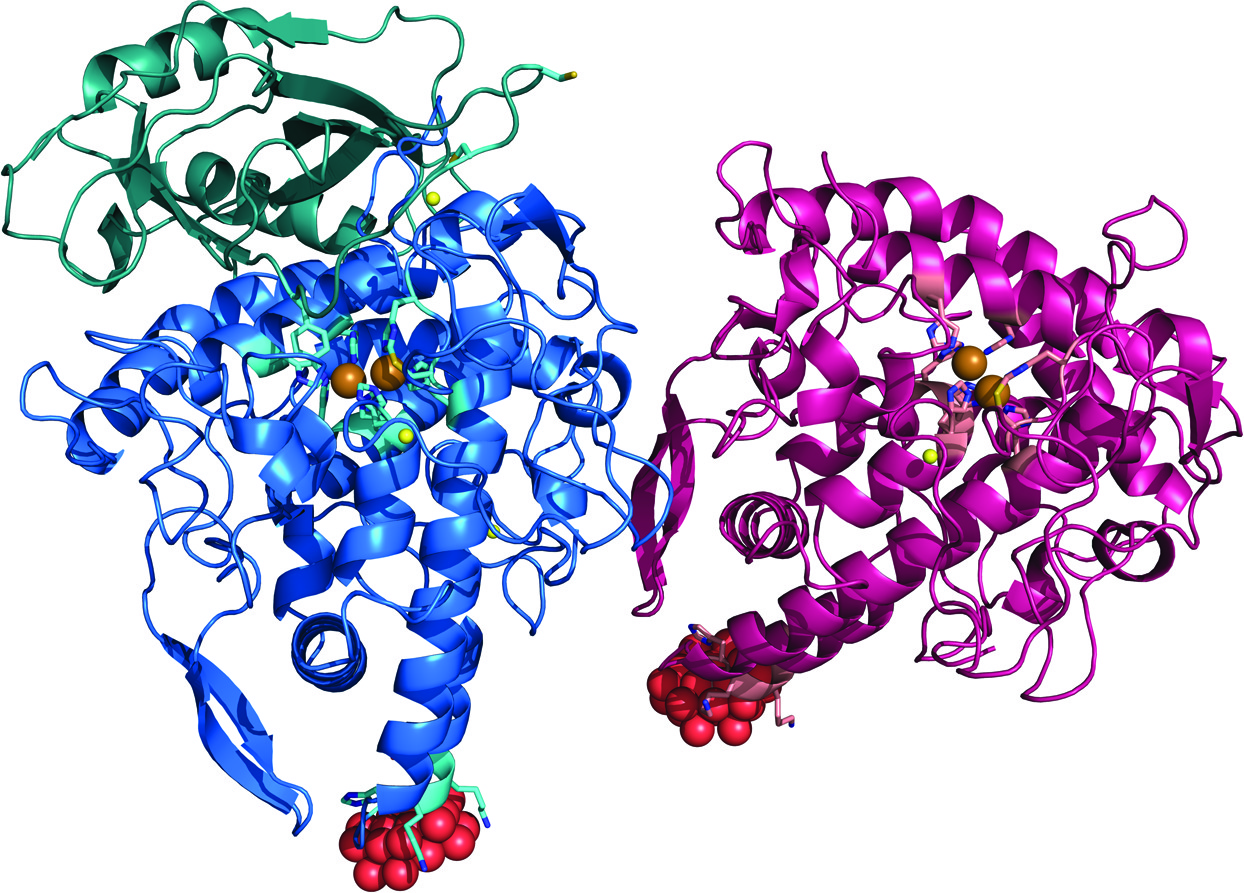Chemists explore the mechanisms behind food spoilage
 The research team of Annette Rompel from the Institute for Biophysical Chemistry, University of Vienna, Austria explore the mechanisms behind the "browning reaction" during the spoilage of mushrooms. The researchers were able to demonstrate that the enzyme responsible is already formed before fungal spoiling [Mauracher et al. (2014). Acta Cryst. D70, 2301-2315; doi:10.1107/S1399004714013777] and [Mauracher et al. (2014). Acta Cryst. F70, 263-266; doi:10.1107/S2053230X14000582]
The research team of Annette Rompel from the Institute for Biophysical Chemistry, University of Vienna, Austria explore the mechanisms behind the "browning reaction" during the spoilage of mushrooms. The researchers were able to demonstrate that the enzyme responsible is already formed before fungal spoiling [Mauracher et al. (2014). Acta Cryst. D70, 2301-2315; doi:10.1107/S1399004714013777] and [Mauracher et al. (2014). Acta Cryst. F70, 263-266; doi:10.1107/S2053230X14000582]
Understanding the mechanism of the enzyme tyrosinase pigmentation is of both medical and technological interest. The copper-containing enzyme is present in animals and humans and is essential for the protective pathway against UV radiation. It also simultaneously provides the elucidation and potential means with which to prevent the spoilage of food. Mushrooms were selected for the study due to their low cost and ready availability. In addition, they are also a valuable target for researchers, largely because of their high enzyme content, fungi are ideal sources for potential studies of tyrosinase. Mushrooms therefore serve as a model organism for the study of the pathway involved in food spoilage.
Since 2012, it has been known that six different tyrosinases (PPO1 to 6) exist within our common edible mushroom, two of which (PPO3 and PPO4) occur in larger quantities. The enzyme responsible for the mechanism of food spoilage is formed within eukaryotes (organisms that have a nucleus) as an inactive precursor during the developmental phase of an organism. This precursor is then activated via specific chemical cleavage. At this cleavage site, the protein segment covering part of the enzyme active site is removed and the substrates (tyrosine and other monophenols) can be accessed and can take part in key chemical reactions.
Until now, none of the previously established methods of isolation present in the literature could be successfully applied to PPO4. For the first time, in the Institute for Biophysical Chemistry at the University of Vienna, a method has been developed that allows for the one stage isolation of latent tyrosinase from its natural source. The enzyme characterization was undertaken at the Department of Chemistry in close cooperation with the Institute of Mass Spectrometry led by Andreas Rizzi, both within the University of Vienna. After sufficiently large quantities were extracted from pure PPO4, the researchers were able to identify and optimize appropriate crystallization conditions that produced well-formed protein crystals. This was only possible with the use of a relatively unusual co-crystallization reagent, a polyoxometalate of the Anderson type.
Following this research, it is now possible to purify the enzyme in sufficient quantities for characterization. The research has allowed the crystallization and three-dimensional structure of PPO4 to be resolved.
This story is reprinted from material from the University of Wien, with editorial changes made by IUCr. The views expressed in this article do not necessarily represent those of IUCr. Link to original source.


